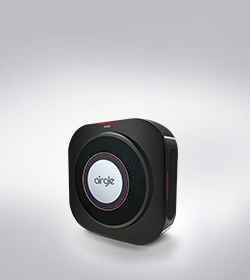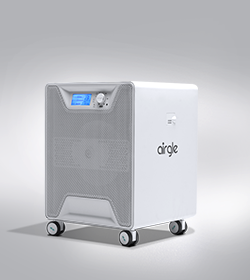Air Purifiers as Cleanup Tools after Indoor Contamination from Wildfires
November 02, 2022
Airgle Press & Articles

If you live in a wildfire prone area of the country, you are likely aware that the pollution resulting from wildfires has a way of infiltrating everything, including your home and workplace environments.
What Is in the Smoke from a Wildfire?
The smoke released into the air contains carbon dioxide, carbon monoxide, water vapor, hydrocarbons, organics, nitrogen oxides and other minerals. Depending on what is burning, the particulate matter released can be highly toxic because of volatile organic chemicals (VOCs) released into the air (e.g. formaldehyde, acrolein, benzene, etc.), because of the density of the particulates, or both. The size of the particles matters when it comes to how it will affect your lungs. If the particles are greater than 10 microns, they can irritate sensitive membranes such as the throat, nose and eyes, but it is unlikely they can be inhaled into the lung tissue.
“Fine particles” are particles that are less than 2.5 microns in diameter. “Coarse particles” are particles that are 2.5 to 10 microns in diameter. Most particulate matter from wildfires tends to be fine particles, less than 2.5 microns in diameter. Any particle less than 10 microns in diameter can be inhaled and lodged deeply within the lobes of the lungs.
But How does This Affect Me?
Even short term exposure to the smoke and particulate matter from a wildfire can cause serious damage to the delicate membranes of the throat, nose, mouth and especially the lungs. Asthmatics and allergy sufferers will all be greatly triggered by the pollution. The lack of a good supply of oxygen can also affect people who have cardiac difficulties. Even if you seal yourself inside your home, outside air *will* penetrate. Longer exposure times are, of course, more dangerous, but any fine particulate matter in the lungs can cause problems and damage. Breathing through a damp cloth can filter out some of the particulate matter, but in the long run, you will want to invest in a high quality air purifier designed to work in areas with dense particulate matter (both coarse and fine).
So What Can I Do to Save My Lungs and Heart?
Besides staying indoors, keeping your windows closed, wear a face mask and avoid exerting yourself during the worst part of the wildfire, the best thing you can do is purchase an air purifier that can capture both coarse and fine particulate matter. If you already own a good air filter, check the state of the HEPA filter and pre-filter to see if you need to replace them. The pre-filter is very important because it captures the largest particles and saves your expensive HEPA filter from clogging.
If you do not own an air purifier, the first thing you need to do is educate yourself on the various available styles and models. Each type of air purifier excels at cleaning different types of environmental pollution. This is important. You may also need to decide between a whole house environmental purifier or a portable air filter. The whole house filter is typically quite expensive, but a less expensive portable filter will only clean the air one room at a time. Industrial portable air purifiers with a much larger capacity than normal consumer air purifiers may also be available for purchase or rental.
What Should I Look for in an Air Purifier?
An air purifier for wildfire pollution should have a high efficiency HEPA filter that filters particles down to at least 0.3 microns in diameter. Fine particulate matter from wildfires can be as small as 0.4 – 0.7 microns, so a 0.3 micron-rated HEPA filter will take almost all of the fine particulates out of the air. A carbon filter (acting as a pre-filter) is a must in order to filter out coarse particles. This allows the HEPA filter to run at full efficiency. In addition, the air filter should have a large amount of absorbent material such as activated carbon or zeolite. This material will absorb gases and odors that the HEPA filter will not eliminate.

 Support
Support Login
Login
 Sign Up
Sign Up
 Cart
Cart


 Login
Login Sign Up
Sign Up







 Previous
Previous